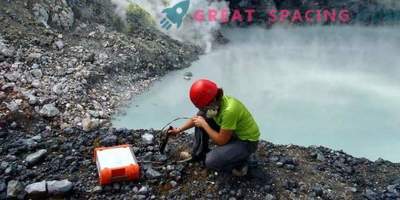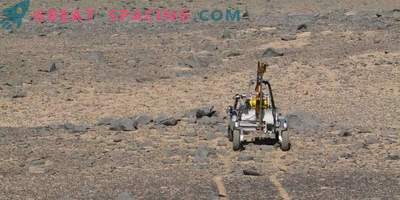
I. Altschuler collects samples from permafrost near the Arctic
Researchers demonstrate for the first time the potential of technology to detect and characterize life on Mars and other planets. For this, miniature scientific instruments and new microbiological methods were used, which made it possible to find and study microorganisms in the Canadian Arctic.
The search for life - the main direction in the study of planets. However, with the launch of the Vikings to Mars in the 70s. no special devices were used. Now most of the instruments of astrobiological missions are looking for suitable conditions, small organic molecules and other biosignals that cannot appear without the participation of living organisms. But all these sources point only to indirect evidence of the existence of life, so they are not suitable for long operations, like flights to Enceladus, Europe and Mars.
Researchers from McGill University (Canada) decided to go a different way: to use several miniature instruments for direct detection and analysis of life. They managed to create a modular “life search platform” capable of cultivating microorganisms from soil samples, evaluating microbial activity and DNA.
To find life on Enceladus, Europe and Mars, the platform must operate in an extreme environment. Therefore, testing conducted in the polar regions. To do this, choose a site 900 km from the North Pole, who played the role of Mars. Using a portable device for DNA sequencing, scientists for the first time showed that the tool can be used not only to study environmental samples, but also to detect active microbial life.
The presence of DNA does not indicate the state of the organism (inactive or dead), but the platform helps to first find an active life, and then identify it and analyze the genomic potential.
Theoretically, the platform can be used to search for life on other planets, but it is not yet ready for a space mission. For this you need to conduct additional experiments, and the mission must be robotized. The DNA sequencer also needs higher precision and durability.
The platform can be used in terrestrial conditions. Usually, samples must be delivered from the collection site to the laboratory. The new technology allows for on-site analysis in an extreme environment (Arctic and Antarctic). This is important in cases where transportation is likely to affect the sample.











































